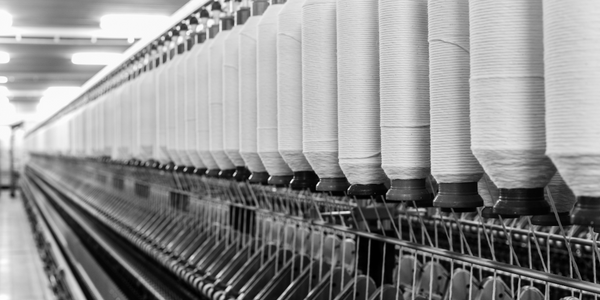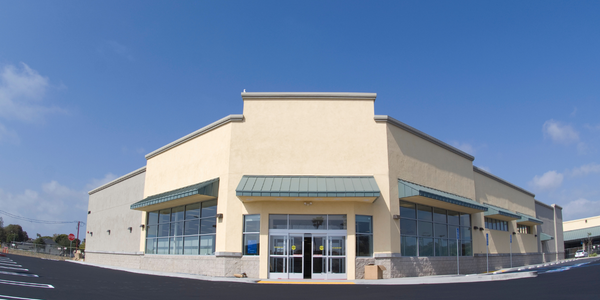Applicable Industries
- Apparel
Use Cases
- Continuous Emission Monitoring Systems
About The Customer
Ganni A/S is a leading Danish fashion brand that has been one of the fastest-growing fashion companies globally since 2009. The company has achieved several commercial milestones, including bringing on a new experienced CEO and partnering with a LVMH-linked Private Equity firm in 2017. Ganni has a growing global fan base and increasing influence in the fashion industry. In recent years, the company has embarked on an ambitious program to become a sustainability leader in the fashion industry, tracking their carbon footprint, offsetting emissions, and setting aggressive reduction targets.
The Challenge
Ganni A/S, a rapidly growing fashion company since 2009, has been making strides in sustainability in the fashion industry. The company has been tracking its carbon footprint and offsetting emissions since 2016. In 2019, Ganni became a signatory of the UN Fashion Charter for Climate Action, setting a goal to reduce CO2 emissions per kg of clothing by 30% in line with the UNFCCC Race to zero by 2050. However, Ganni wanted to take a step further by gaining a more detailed understanding of their emissions and setting up an ambitious carbon strategy. The company aimed to become the most sustainable fashion provider by 2025, setting aggressive reduction targets.
The Solution
To achieve its sustainability goals, Ganni partnered with Plan A to conduct a comprehensive investigation into the company's corporate carbon footprint. Using Ganni's internal data and following the GHG protocol methodology, Plan A calculated Ganni's entire corporate carbon footprint, focusing specifically on purchased materials and their emission intensity. These calculations were used in Ganni's annual sustainability report and adjusted for Ganni's annual reporting into the CDP database. After measuring and reporting on their emissions, Plan A worked with Ganni to set absolute reduction targets and define the pathways to achieve them. This included calculating pathways in line with SBTi to achieve a significant reduction of absolute emissions by 2030 and reviewing Ganni's proposed insetting strategy to embed sustainability into their suppliers and across their value chain.
Operational Impact
Quantitative Benefit

Case Study missing?
Start adding your own!
Register with your work email and create a new case study profile for your business.
Related Case Studies.

Case Study
Fire Alarm System and Remote Monitoring Sytem
Fire alarm systems are essential in providing an early warning in the event of fire. They help to save lives and protect property whilst also fulfilling the needs of insurance companies and government departments.Fire alarm systems typically consist of several inter-linked components, such as smoke detectors, heat detector, carbon monoxide, manual call points, sounders, alarm and buzzer. The fire alarm system should give immediate information in order to prevent the fire spread and protect live and property.To get maximum protection a shoe manufacturer in Indonesia opted for a new fire alarm system to monitor 13 production sites spread over 160 hectars. Although the company had an existing fire alarm system, it could not be monitored remotely.It was essential that the new system would be able to be monitored from a central control room. It needed to be able to connect to the existing smoke detector and manual call point. Information should be easily collected and passed on to the Supervisory Control and Data Acquisition (SCADA) system. Furthermore, the system should have several features such as alarm management, auto reporting, being connected to many client computers without additional cost, and run 24/7 without fails. The company also needed a system which could be implemented without changing the architecture of the existing fire alarm system.

Case Study
IoT Applications and Upgrades in Textile Plant
At any given time, the textile company’s manufacturing facility has up to 2,000 textile carts in use. These carts are pushed from room to room, carrying materials or semi-finished products. Previously, a paper with a hand-written description was attached to each cart. This traditional method of processing made product tracking extremely difficult. Additionally, making sure that every cart of materials or semi-finished products went to its correct processing work station was also a problem. Therefore, the company desired an intelligent solution for tracking assets at their factories. They also wanted a solution that would help them collect process data so they could improve their manufacturing efficiency.

Case Study
Retailer Uses RFID Scanner to Improve Efficiency
Patrizia Pepe wished to improve the logistics of their warehouse: accepting incoming goods from their production sites, movement of items throughout
the warehouse, and packaging of goods for distribution to the retail locations. They initially tried to use barcodes for this function. Because barcodes must be individually scanned within a line-of-sight, the acceptance of goods coming into the warehouse was too time consuming. Working with the University of Florence, Patrizia Pepe instituted a five-month pilot project beginning in August of 2009 to test the validity of an RFID solution. The pilot involved tagging of about 60,000 items for the second seasonal collection, and convinced the company to move forward with tagging all items.

Case Study
Monitoring and Controlling Automatic Mixing and Dispensing Machines
As technology advances, textile manufacturing has been transformed from a labor-intensive to a partially or fully automated industry. Automation is significant in all segments of textile production - from spinning to printing, and textile machinery manufacturers are constantly searching for new technologies and automation processes will increase the productivity of their machines. The color paste mixing and dispensing machine is an essential part of the printing and dyeing process. With the advantage of automatically computerized controls and database management, the system can significantly improve its dispensing precision, working efficiency and production quality as well as reducing material consumption.









